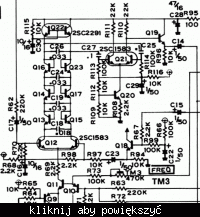shoe
Newbie level 6
Hello All, I am a musician and I am branching out into electronics.
I'm a fairly technically minded person, I took tech at school and got an A+ but
that was years ago and I think i've forgotten everything, so i'd appreciate a
bit of help designing a variable frequency lowpass filter suitable for audio. One day my dream is to build a full analog synthesizer.
i.e 1 - 250000 Hz, 16 bit or better resolution, sampling frequency > 44Khz and with (this is the tricky bit a variable frequency lowpass cutoff from 1 - 25,000 Hz ( I know, audible range is 1hz - 20khz but if you have a trained ear, you can definately hear the higher frequencies. Many audiophiles beleive that the 1 - 20 level which is banded about is really just a crude approximation.)
a variable frequency lowpass cutoff from 1 - 25,000 Hz ( I know, audible range is 1hz - 20khz but if you have a trained ear, you can definately hear the higher frequencies. Many audiophiles beleive that the 1 - 20 level which is banded about is really just a crude approximation.)
So, here is something I designed in filterlab. Its a four stage butterworth, Im not sure if it is fit for purpose and it definately isn't variable, its simply 1000hz fixed.
I would like to make this smoothly sweepable, from 0 hz upwards, so that I can filter my sounds through it.
I have only a vauge idea of how to implement this though; so Im looking for some guidance from any audio fiends out there.
Thankyou everyone, for your help.
I'm a fairly technically minded person, I took tech at school and got an A+ but
that was years ago and I think i've forgotten everything, so i'd appreciate a
bit of help designing a variable frequency lowpass filter suitable for audio. One day my dream is to build a full analog synthesizer.
i.e 1 - 250000 Hz, 16 bit or better resolution, sampling frequency > 44Khz and with (this is the tricky bit
So, here is something I designed in filterlab. Its a four stage butterworth, Im not sure if it is fit for purpose and it definately isn't variable, its simply 1000hz fixed.
I would like to make this smoothly sweepable, from 0 hz upwards, so that I can filter my sounds through it.
I have only a vauge idea of how to implement this though; so Im looking for some guidance from any audio fiends out there.
Thankyou everyone, for your help.
